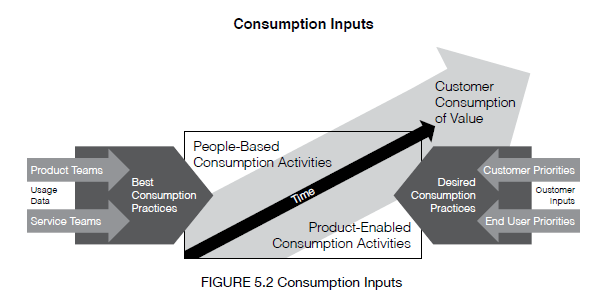This week, we present Chapter 5: The Data Piling Up in the Corner. This is the sixth post in a series dedicated to helping MSPs understand and adopt the recommendations of Consumption Economics–The New Rules of Tech. Chuck introduces the chapter by sharing how the content resonates with his 30+ years of industry insight.
A FEW WORDS FROM CHUCK
Chapter 5 of Consumption Economics, “The Data Piling Up in the Corner” was one of my favorites. It resonated with something I learned early in my career that still holds true today: the information about an event is more valuable than the event itself. Interestingly enough, this concept is now forefront in the national discussion, only it now has a name – Metadata – made famous by the NSA. Metadata is defined by Merriam-Webster as “data that provides information about other data.”
I started my career in telecom in 1992 as a founding member of the Advanced Technology Group at MCI Communications. One of my mentors explained how the information related to a customer’s “phone call” was more valuable than the money MCI received from the customer for the call. It took some time for me to truly understand this concept until I actually saw the “information related to” a customer’s phone call.
In the world of telecommunications, the “information related to” a phone call is called a Call Detail Record or CDR. If you have never seen a CDR, it is an impressive and extensive “record” of a phone call. It can include over 50 metadata containing “data fields” with information related to a single call but does not include the content of that call. Phone numbers of both the calling and receiving parties, the start time, and the duration of the call are just a few pieces of information included in the content of a CDR.
If you are wondering — yes, this is the phone Metadata the NSA was collecting under the Patriot Act that just expired and was replaced by the Freedom Act signed this week (thankfully, they were not collecting a recording of the calls.) Obviously, the NSA believed that the information about our phone calls was more important than a recording of the phone call itself.
Just by using information about their customers’ calling patterns, one of our White Label Resellers (WLR) was able to generate an additional $1,000 in monthly revenues from their existing customer base. By reviewing their customers’ CDRs, the WLR was able to identify those who used their phone for three way calling. Since most IP phones only support 3-way conference calling from the device, a “conference bridge” becomes necessary for more than 3 users. They offered these customers free use of a conference bridge for 30 days. This added functionality became indispensable to 100 of their customers—a pure monthly profit of $1,000.
Do you review the information available to you regarding how your customers consume your technology products and services? Are there other products or services you could provide to them to generate additional revenues? Review the excerpt of Chapter 5 to find out how you can utilize pertinent information. It could lead you to selling them additional services they might not know they need ☺!
AN EXCERPT FROM Consumption Economics—The New Rules of Tech
 Chapter 5: The Data Piling Up In the Corner
Chapter 5: The Data Piling Up In the Corner
The key enabling capabilities in the age of Consumption Economics are our real-time access to users and the ability to aggregate and analyze usage data. Right now, at most tech companies, that data is piling up on their cloud servers like junk piles up in your garage. Most companies intend, eventually, to do something with that data, but for right now they are just putting a mental tarp over it.
Hewlett Packard did some pretty great things in their garage in Palo Alto. Now it is our turn. We need to take the tarp off of our pile of data and get to work on it. It represents perhaps the most important new opportunity for this generation of tech. We can leverage real-time user data to change how we develop our products, simplify their use, guide the end users to increased capability and adoption, deploy the best practices in much more targeted and in-depth ways, increase customer value, and grow big, profitable customers. In short, we can change the world by developing a Consumption Model that drives profoundly higher success rates for all manner of technologies, and with that, we can fly over the Margin Wall and rescue our products from commoditization.
Broadly speaking, we need to use our best people and their experiences and insights into how the products should be used and are being used by the most successful customers. Product managers need to begin to identify how they want the product’s use to unfold to create an optimized end-user experience and to get full adoption of the product’s stickiest, profitable features. The service organization needs to document what it learns about the successes of actual customers and the roadblocks that prevent others from achieving them. In essence, we need to identify the best practices for consuming our product’s value. We also need to introduce the ability for the product’s consumption to be guided by the priorities of our corporate customers and/or the individual end users themselves.
We can’t scale all the smart people, but we can scale their insights by embedding them into the products themselves. In the future, we must build a layer of capability into the products that is designed to take the learning that comes from the product’s experience in the market and dynamically, purposefully, alters how the product presents itself to different end users in real time.
The freeing power of the cloud will enable more and more customers to try or pilot new technologies. Why? Well, for one, the up-front investment to try things goes to near zero. For many cloud offers, there is no need for installation, etc. Just sign up and go. Secondly, the risk shift means that if they don’t like it or can’t use it, then they pay little or nothing. All they have lost is a little bit of time. The risk is on the tech company, and their reward only happens if they take the right steps to ensure the customer is successful. This is Consumption Economics.
Taking a small “trial” opportunity and turning it into a huge customer—and doing that around the globe—will become a differentiating capability for tech companies. Companies that survive and prosper on this side of the Margin Wall, where prices are lower and volumes must be high, will need to get really good at this.
Because D3UC is dedicated to and entrenched with the MSP community, each week a new chapter of Consumption Economics will be discussed with emphasis focused on the challenges faced by VARs and MSPs who are transforming their companies’ business models to survive and thrive in the new, Cloud-driven world.
If you would like an overview of the book Consumption Economics, you can download a copy of the “abridged” version written by the TSIA from our website.
Week 2: How Good We Had It: The Money-Making Machine Known as High-Tech
Week 3: Shifting Clouds and Changing Rules
Week 4: Looking Over the Margin Wall
Week 5: Learning to Love Micro-Transactions
Week 6: The Data Piling Up in the Corner
Week 7: Consumption Development: The Art and Science of Intelligent Listening
Week 8: Consumption Marketing: Micro-Marketing and Micro-Buzz
Week 9: Consumption Sales: After a Great Run, the Classic Model Gets an Overhaul
Week 10: Consumption Services: Will They Someday Own “The Number”?
Week 11: How Fast Should You Transform?
Week 12: A Few Words From Chuck – The Epilogue
Published: June 2015
Reviewed: November 2016


